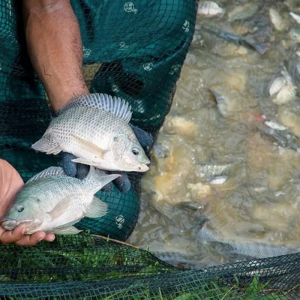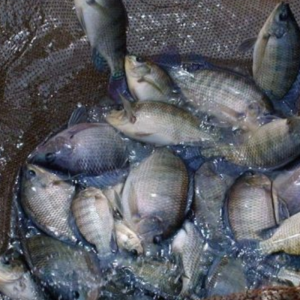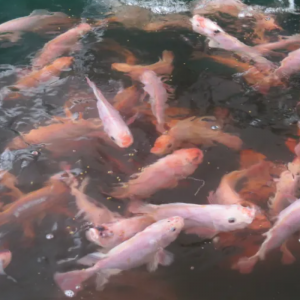
Sodium Bicarbonate - Safe Anesthetic for Red Tilapia
| Tue, 17 Sep 2019 - 11:00
The need for transporting and handling live fish in aquaculture operations has led to the development of methods of anesthetizing fish without reducing their health or commercial value.
Untreated fish are under great pressure during fishing, transporting, causing stress and pain, affecting physiological and biochemical reactions in fish, causing hormonal and metabolic disorders. in fish. Besides, although many types of chemical anesthetics are available, it is necessary to carefully consider the economic, safety and regulations when using chemical anesthetics on food fish.
One of the safer chemical anesthetics that can be used in fish anesthesia is sodium bicarbonate (sodium bicarbonate). It is also known as baking soda and when dissolved in water, it releases carbon dioxide, which has an anesthetic effect on the fish (Bowser 2001). This gas has been shown to be safe for humans; therefore, there are no restrictions on its use (Summerfelt and Smith 1990). When used as an anesthetic, carbon dioxide is bubbled in water directly through an airflow connected to the source or indirectly by adding sodium bicarbonate as a source of carbon dioxide (Altun et al. 2009).
In an earlier study involving tilapia ( Oreochromis niloticus)) demonstrated the effectiveness of the use of this chemical anesthetic, and its effectiveness was influenced by the size and size of the fish (Opiyo et al. 2013). Although there is information from previous studies, it shows that the effect of this anesthetic on the same fish at different salinity levels is different. Because both brackish and salt water contain significant amounts of carbonate, it can have an impact on sodium bicarbonate activity when added to water. Since aquaculture can be done under fresh, brackish and saltwater conditions, the potential of sodium bicarbonate should be assessed when used as anesthetic for fish under these conditions. Therefore, the study of Arlene L. Avillanosa et al 2019 used red tilapia to verify the effectiveness of using sodium bicarbonate as Anesthetic for the fish in both fresh and brackish water conditions.
Result:
Research has demonstrated that sodium bicarbonate can be used as an effective anesthetic for red tilapia. In an earlier study, Opiyo et al. (2013) also showed that young tilapia, O. niloticus reacted positively to this substance when used as an anesthetic and there were no cases of dead fish.
Acceptable anesthetic can be used during the treatment of recommended anesthesia in fish within 3 minutes and complete recovery after 5 minutes (Marking and Meyer 1985; King et al. 2005; Ross and Ross 2008). In the current study, the use of sodium bicarbonate as an anesthetic in red tilapia satisfies these requirements, except when this substance is used in brackish water at a concentration of 50g / l, in which the anesthetic On average, it takes more than 4 minutes.
Dissolving sodium bicarbonate in water releases carbon dioxide. This gas is used for anesthetic purposes in fish at different water temperatures and is used primarily to soothe fish during transportation or to allow the handling of large numbers of fish (Bowser 2001). The study also did not observe any mortality in young red tilapia during anesthesia and post-recovery, because of the slow release of carbon dioxide in water after complete dissolution of sodium bicarbonate.

Sodium bicarbonate can be an effective anesthetic for young red tilapia during short-term treatment and does not lead to fish death. Young red tilapia raised in brackish water take a longer time to be completely anesthetized than those raised in freshwater. In both culture media, the anesthetic concentration affects the duration of anesthesia in the fish. This study also emphasized that high concentration of sodium bicarbonate is needed to anesthetize red tilapia hybrids when the water temperature is high. The complete recovery time of the fish was not significantly different in both culture media and was not affected by the anesthetic dose. The application of sodium bicarbonate at high pH levels can be a good and inexpensive alternative to other anesthetics for fish.
Based on the results of this study, the effective dose of sodium bicarbonate will result in complete anesthesia in red tilapia in brackish or fresh water of 50 g / l. At this concentration, the fish has been under anesthesia for a short period of time and can recover quickly without adversely affecting survival after exposure.
Source : tepbac.com






















